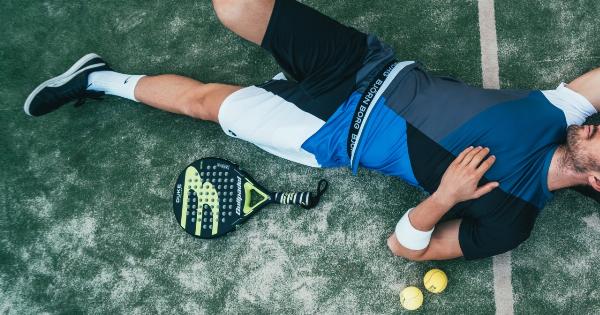Sports injuries can be quite common, especially among professional athletes or those who engage in rigorous physical activity.
These injuries can range from acute injuries that occur due to accidents or trauma, to chronic injuries caused by overuse or repetitive stress. Whatever the cause, it is important to identify the type of injury in order to receive prompt and effective treatment.
Fractures
Fractures, or broken bones, are among the most common types of sports injuries, particularly among contact sports such as football, basketball, and hockey.
Symptoms of a fracture may include intense pain, swelling, bruising, and difficulty moving the affected limb. In some cases, a visible deformity may also be present. If you suspect a fracture, seek medical attention immediately.
Strains and Sprains
Strains and sprains are common injuries that occur when muscles or ligaments are stretched or torn. Strains typically occur in the muscles, while sprains occur in the ligaments.
Symptoms may include pain, swelling, stiffness, and difficulty moving the affected area. In some cases, a popping or tearing sensation may also be felt at the time of the injury.
Rest, ice, compression, and elevation (RICE) are recommended for initial treatment, followed by physical therapy to regain strength and mobility in the affected area.
Tendinitis
Tendinitis is a type of overuse injury that occurs when the tendons, which connect muscles to bone, become inflamed. This condition can affect any part of the body, but is most common in the elbow, shoulder, knee, and ankle.
Symptoms may include pain, tenderness, and stiffness in the affected area. Treatment typically involves rest, ice, and anti-inflammatory medication, as well as physical therapy to strengthen the affected area and prevent further injury.
Bursitis
Bursitis is a condition that occurs when the bursae, small fluid-filled sacs that cushion the joints, become inflamed. This condition is often caused by repetitive movements or overuse.
Symptoms may include pain, swelling, and stiffness in the affected joint. Treatment typically involves rest, ice, and anti-inflammatory medication, as well as physical therapy to strengthen the affected area and prevent further injury.
Concussion
A concussion is a type of traumatic brain injury that can occur when the head is hit or jolted violently. Symptoms may include headache, dizziness, confusion, nausea, and difficulty concentrating or remembering.
In some cases, loss of consciousness may also occur. If you suspect a concussion, it is important to seek medical attention immediately, as this condition can be serious and lead to long-term complications if left untreated.
Dislocation
A dislocation occurs when a bone is forced out of its socket, typically due to trauma or sudden impact. Symptoms may include pain, swelling, and difficulty moving the affected joint. Visible deformity may also be present.
Seek medical attention immediately if you suspect a dislocation, as this injury can be serious and may require manipulation or surgery to fix.
Heat Exhaustion
Heat exhaustion is a type of heat-related illness that can occur when the body overheats due to prolonged exposure to high temperatures or physical activity. Symptoms may include dizziness, headache, nausea, vomiting, and weakness.
The skin may also become cool and clammy, and the individual may experience rapid heart rate or breathing. Mitigate risk of heat exhaustion by staying properly hydrated and taking breaks in cool and shaded areas during extreme temperatures or physically demanding exercise.
Heart Attack
A heart attack is a serious condition that can occur during strenuous physical activity, particularly in individuals with pre-existing heart conditions.
Symptoms may include chest pain, shortness of breath, and pain or discomfort in the arms, neck, jaw, or back. Seek medical attention immediately if you suspect a heart attack, as this condition can be life-threatening if left untreated.
Conclusion
In conclusion, sports injuries are common among athletes and individuals who engage in rigorous physical activity. It is important to identify the type of injury in order to receive prompt and effective treatment.
Seeking medical attention and proper treatment, as well as prevention and conditioning measures, may help prevent further injury and promote a healthy, active lifestyle.































